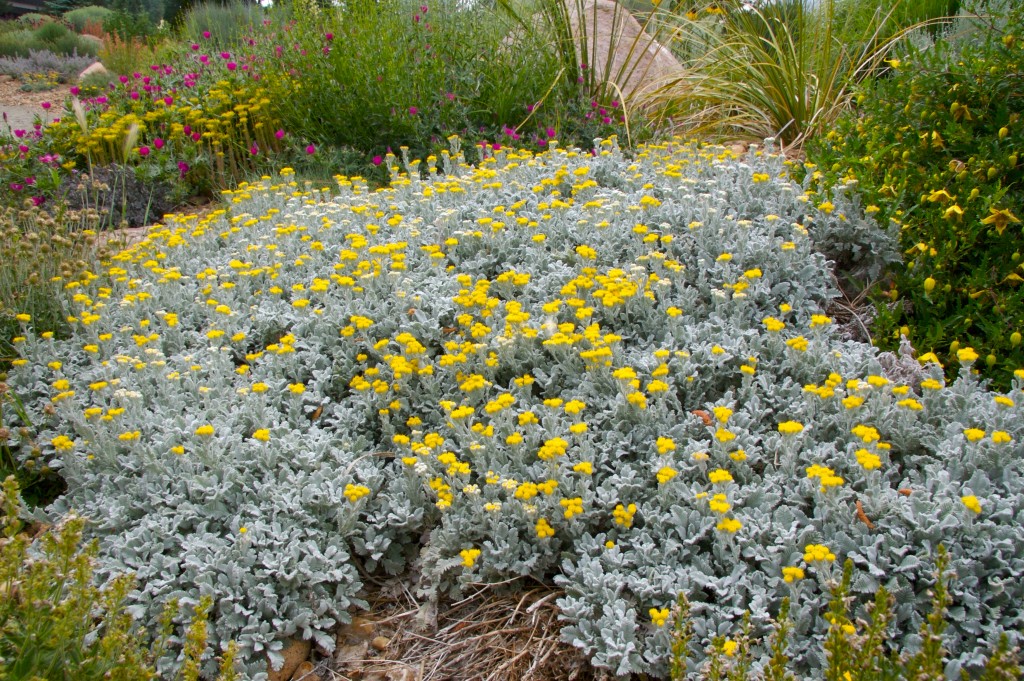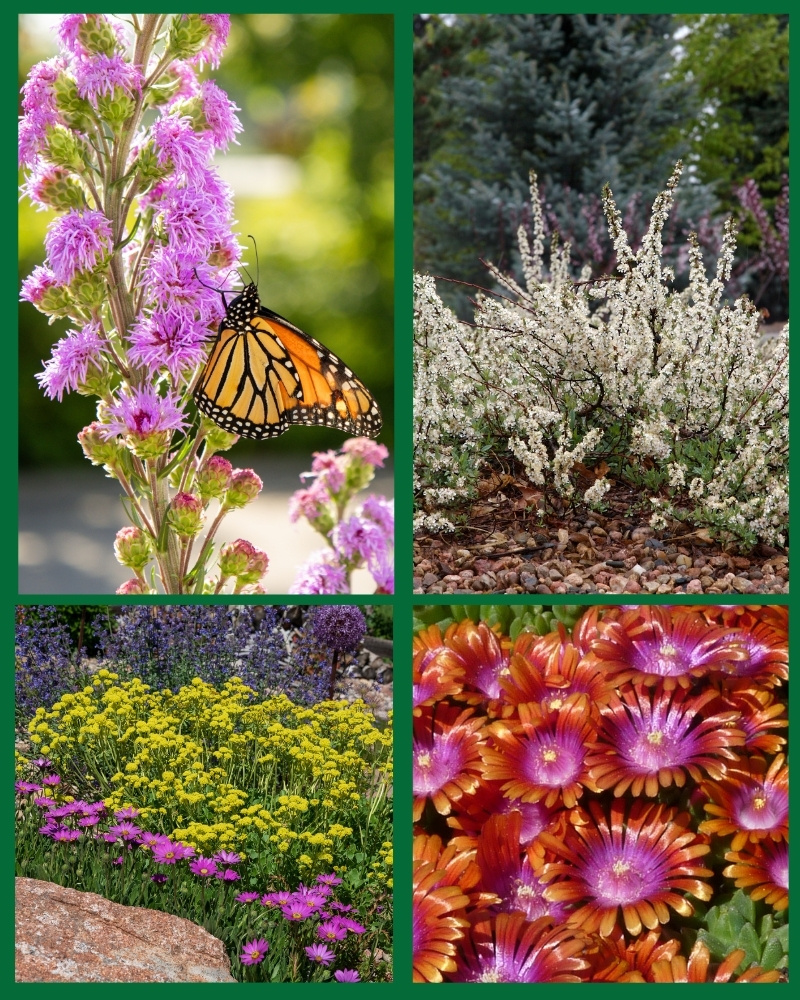Plant of a different feather: partridge feather

Peter Davis introduced this plant from Southeastern Turkey in the 1950s. As such it makes one wonder why it isn’t called a turkey feather? Nonetheless, the feathers, or rather the leaves of this plant provide its greatest appeal. Indeed they do look like partridge feathers, therefore quite distinctive from other plants. They cluster on slightly fuzzy prostrate stems forming a frilly mound radiating a silvery white to almost blue cast. The leaves stay on year round, although not as attractively in the winter as in the growing season.
The leaves are around 3 to 5 inches tall creating a groundcover that becomes a foundation for clusters of small yellow button like flowers appearing on stems slightly above the fray in late June and early July. The yellow and white make an eye appealing contrast particularly in a large colony of Partridge Feather.
Rock gardens are especially enhanced by the presence of this sun loving, low water using plant. The contrast of silvery white against the greens of other leaves is striking. Its habit of crawling over stones and inching its way up and down slopes makes it ideal for a rock garden. It also likes the good drainage raised rock gardens readily supply. Partridge Feather placed on a crest or the high point of a rock garden can be quite arresting when the leaves and flowers are backlit by the sun.
Companion plants are those that grow well together under the same growing conditions and complement each other particularly when they are flowering. Some suggestions are: winecups (Callirhoe involucrata), Mexican hat cone flower (Ratibida columnifera), Coral Canyon® twinspur (Diascia integerrima), Mojave sage (Salvia pachyphylla) and Johnson’s Blue geranium.
Partridge Feather isn’t a common plant in most gardens, so having one or more in your garden will put a feather in your cap.
View the plant profile here. Or watch the video here.
Partridge Feather (Tanacetum densum subsp. amani)
Perennial
Height: 3-5 inches
Width: 15-24 inches
Blooms: June
Sun: Full sun or part shade
Soil Moisture: Moderate to xeric (little or no irrigation needed once established.)
Hardiness: USDA zones 4-9
Culture: Most soils and exposures, but does not do well in wet or humid conditions.
Thanks to David Winger, Winger Photography, for writing this piece.



Hi, where can I find this plant? I live in Southern California and want to plant this ground cover plant on my slope
Looks like High Country Gardens carries it: http://www.highcountrygardens.com/search/go?w=tanacetum%20densum%20ssp.%20amani. I would not recommend this as your sole slope solution, however. Best to mix groundcovers to assure a more successful cover.
How do you split and start new growth of partridge feather? Mine is huge and has gotten out of control
Just cut it back closer to the center. Usually, do that in spring, but you could do it now if need be.
I have a Partridge Feather which is large and beautiful. several years old. I want to place some of it in a different area but was not sure what season I should do this. Thank you form your information.
Happy High Couhtry Garden customer
Divide and move portions in mid-April to mid-May. The plant can look much larger than the root mass. You can try rooting the live stems in a container in May too.
To those of you who would like to divide your huge and out of control partridge feather plants… I would love to buy some cuttings! I can’t find this plant anywhere, let alone any seeds.
This plant is grown by cuttings. Have fun! It’s a great xeric plant.
Is it deer-resistant?
Yes! Enjoy!
My plants spread and are beautiful. I noticed sections look like they are dying. I cut those parts out. How do I prevent this. I planted mine about six years ago. I’m in Colorado.
Yes, some branches can die as these plants get older. Rejuvenate them in the spring, by cutting them back a little and removing older stems. Enjoy!
My plant keeps turning yellow & then falling apart, like it’s rotting from within. I can’t tell if this is from too much moisture caused by trapped leaves, or not enough. I don’t have it on my drip line, should I? I live in Southern Utah, soil has a lot of clay in it but we only get about 9 inches of rain a year. Thank you in advance!
This plant does easily rot out from moisture caught in leaf debris. Keep it cleaned out, use rock mulch. No dripline is needed, but occasional watering will suffice.
I’m considering getting this plant for my garden but I want to be sure that it’s not poisonous to my dogs, does anyone happen to know if it is? I haven’t been able to find anything on the subject
We planted ours 2 summers ago and they’ve spread out in a circular pattern but they appear to be dead in the center. Should we cut back the dead center of the plant? We live in Colorado at 8,500 feet altitude, so it’s a short growing season..
Cut it back, this plant prefers heat and it probably does not get a lot of heat at that elevation. It should be in the fullest sun possible and reflective heat from buildings and evergreen plants helps.